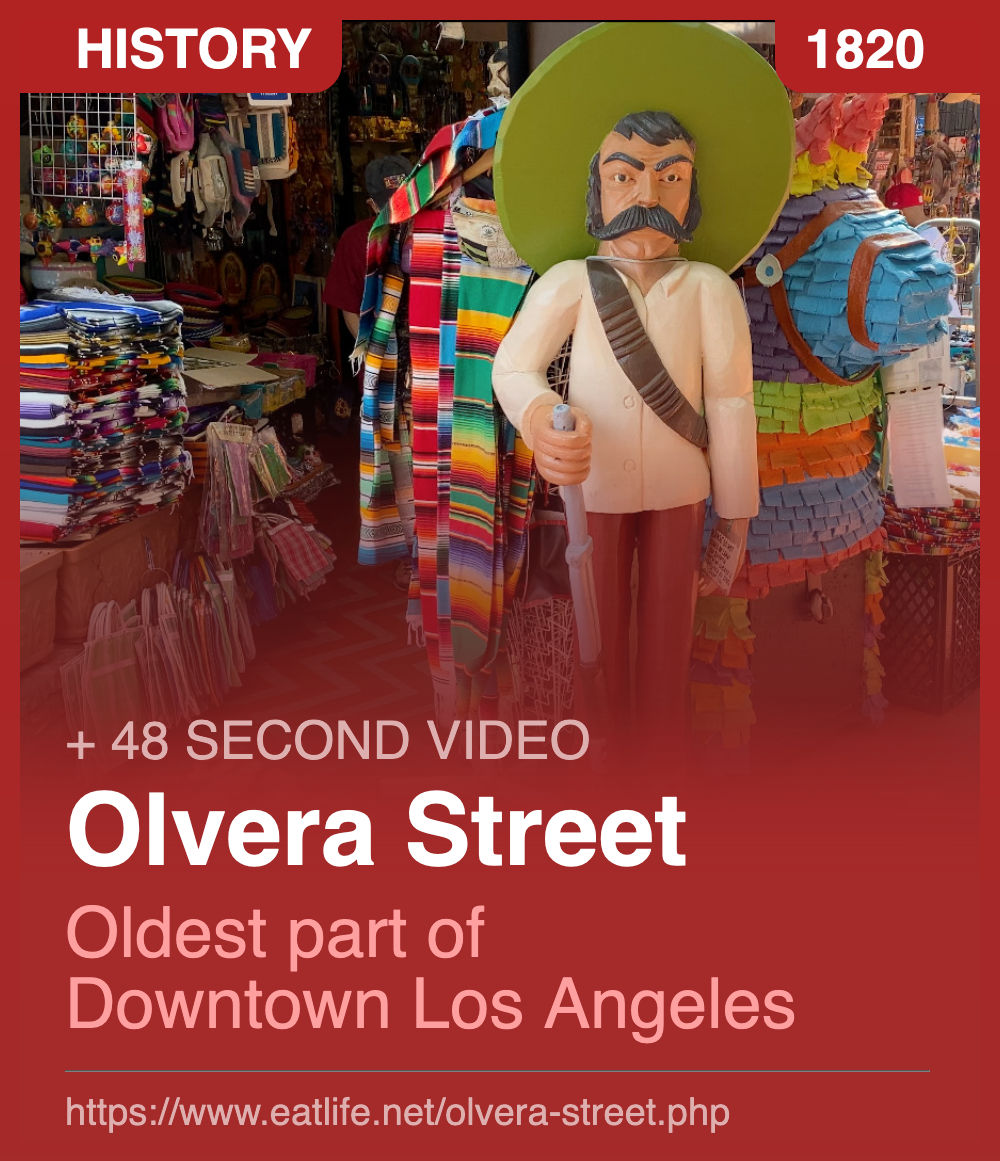Olvera Street:
Part of the main square of Downtown Los Angeles since the 1820s,
when California was still part of Mexico.
Lots of historic buildings are on Olvera Street, the Avila Adobe is the oldest existing house in the city. Built in 1818 by L.A.‘s Mayor
The Sepulveda House was built by One of the wealthiest women in America. It was her dream house with 22 rooms, two commercial businesses and three residences <>The Pelanconi House was a winery producing wine from the grapes that grew in the area. The DNA from the vines are a perfect match with the grapes at Mission San Gabriel from 1771 Olvera Street attracts almost two million visitors per year
Wine Street:
Back in the day The street was called either Wine Street
or Vine Street depending on which 19th Century map you looked at,
there is a theory that wine was spilled on the map
and it erased the first half of the "W" in "Wine" and changed it into vine.
In 1877, Wine street or Vine Street was officially renamed to Olvera street.
It was Named after LA county's first judge who lived on the street:
Agustin Olvera
Avila Adobe:
The Avila Adobe is the oldest existing house in the city. Built in 1818 by L.A.‘s Mayor, Don Francisco Avila. It was commandeered by the U.S. Navy during the Mexican-American War in 1847.
Sepulveda House:
The Sepulveda House was built on Olvera Street in 1887 by One of the wealthiest women in America. Eloisa Martinez Sepulveda. It was her dream house with 22 rooms, two commercial businesses and three residences.
Pelanconi House:
Built in 1857. The Pelanconi House was a winery producing wine from the grapes that grew in the area. The DNA from the vines are a perfect match with the grapes at Mission San Gabriel from 1771
That's Before Napa. Sonoma. Monterey. Even before Santa Barbara. The Olvera street vines are even older than the state of California
Run Down Olvera Street:
The turn of the century brought with it neglect, decay and disrepair. Enter Christine Sterling, a wealthy, young, well-connected socialite from Northern California with a hunger for history.
When Christine first discovered Olvera Street in 1926, she was shocked by the dilapidated condition of the oldest part of the city.
Where once had stood the city's finest buildings and cultural center was now a hideaway for prostitutes and street crime.
Old Olvera Street had a date with the bulldozers, but Christine would have none of that. She envisioned a Mexican Marketplace and a cultural center in the heart of Los Angeles to preserve the memory of old L.A.
Christine's romantic vision brought Los Angeles' first street back to life and brought in Mexican American merchants to sell their wares, artifacts and celebrate their fiestas as they would in old Mexico.
The Avila Adobe and most of the other 26 surrounding structures were ticketed for demolition. Christine campaigned for favorable press from the Los Angeles Times, and with that came help investors and government agencies (including the Sheriff's Department, which provided prisoners for labor). Her dream of closing the street to automobile traffic and opening a Mexican village came to fruition on Easter Sunday, 1930. http://olvera-street.weebly.com/history.html













